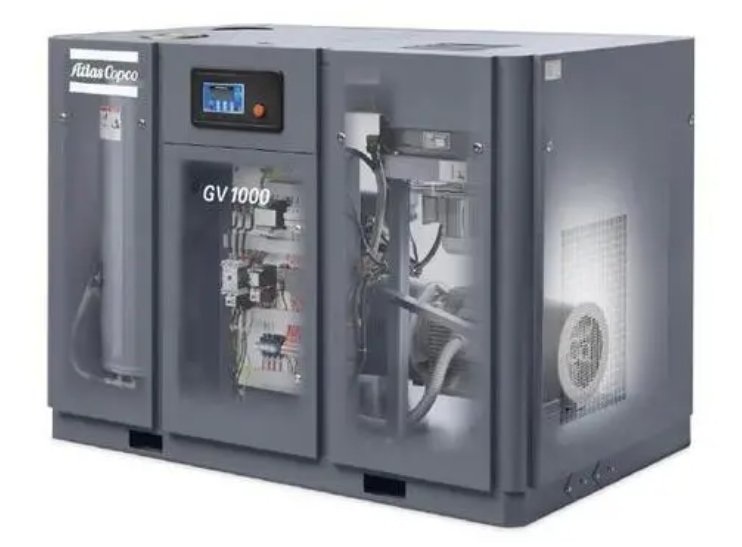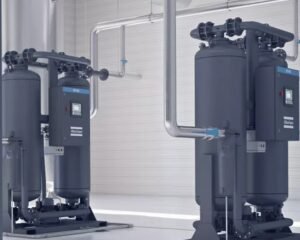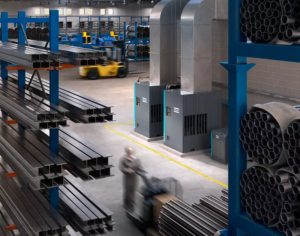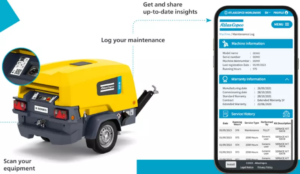According to statistics, about 65% of air compressor failures are caused by sudden drops in temperature. In winter, as the temperature gradually drops to freezing point, the difficulties faced by your air compressor also ensue. So do you know the main faults that air compressors will encounter in winter? Can we take steps to avoid these failures in advance? This article will provide you with detailed guidance to help you and your company protect your production processes while avoiding expensive and unnecessary repair costs.
1.Common faults of air compressors in winter.
2.Things to consider when the temperature drops.
3.Importance of heat recovery system.
4.Check the functionality of the drainage device.
6.Identify and repair air leaks.
1. Common Faults Of Air Compressors In Winter
- Condensate issue: As the temperature decreases, due to improper handling of the condensate produced by cooling water and compressed air, it may result in pipe rupture or condensate infiltration into the gas supply line. In extreme cases, it might be necessary to install heat tracing devices to prevent pipe freezing.
- Lubricating oil problem: Cold weather will impact the service life of the lubricating oil, and when the equipment is not frequently started or restarted at low temperatures, the oil circuit may condense the lubricating oil because of the low temperature, thereby affecting the normal operation of the equipment.
- Difficulty in compressor startup: Under winter low-temperature conditions, the compressor is more challenging to start, mainly due to the increase in oil viscosity, the reduction in battery capacity, and the increase in compressed air leakage, among other factors.
- Exhaust pipe smoke phenomenon: If the air compressor fails to start smoothly or encounters difficulties, its exhaust pipe may emit a large amount of gray or black smoke, which is typically caused by poor diesel evaporation and combustion, the poor atomization effect of the injector, and a too-late oil supply time.
- Issues with air filter and oil separator: If the air filter is clogged or the oil separator filter element is blocked, it will cause the output air volume or pressure of the compressor to be lower than the normal level.
- Leakage phenomenon: The existence of leakage points in the piping system will lead to a false air demand, thereby wasting valuable compressed air and reducing system efficiency.
- High pressure dew point: This could be attributed to a high intake temperature, a rising ambient temperature, or insufficient intake pressure.
- Compressor in unloaded state: This situation can be caused by the failure of the solenoid valve or the intake valve getting stuck in the closed position.
- Safety valve opening issue: The opening of the safety valve might be caused by the solenoid valve malfunction or the intake valve not closing.
- Vibration problem: In a cold environment, if the water in the seal freezes, it will damage the comb seal, resulting in increased vibration and eventual shutdown.
- For these common failures, it is important to do a good job of winter maintenance and preparation, including insulation, drainage, checking the status of lubricating oil, regularly replacing the air filter and oil separator filter element, repair leakage points, etc.

2. Things To Consider When The Temperature Drops
As temperatures drop, condensation from cooling water and compressed air can become a problem. No matter what system you use, it's critical to properly manage your cooling system, similar to what you would do to prevent your car's coolant from freezing in the winter. Make sure all exposed drainage and plumbing systems are properly insulated, similar to what you would do for your home plumbing system. This not only prevents pipe breakage, but also prevents condensate from invading the gas supply line. In extreme weather, it may be very effective to consider installing heat tracing devices (heating elements arranged along the outside of pipes or drainage devices).
This method is especially useful if you are using a freezer dryer and the exposed pipe temperature may drop below the dew point, causing condensation downstream of the dryer. In wet weather, always check the air intake to ensure that adequate protection is in place to prevent rain or snow from blowing in, so as not to saturate the air filter or freeze the air intake. Tips: If the compressor, dryer, or oil-water separator is idle, it is recommended to drain all untreated condensate or cooling water to prevent pipe or cooler rupture.
3. Importance Of Heat Recovery System
Air compressors not only provide compressed air - known as the "fourth utility" after water, electricity and gas - they also generate a lot of heat in the process of producing compressed air, which can be recovered and used in other processes in the plant. Ideally, the heat generated during the compressed air process can achieve recovery rates of up to 90%.
Heat recovery systems not only provide hot water for cleaning rooms and equipment, saving on hot water production costs, but also provide cost-effective heating for work areas, warehouses, loading docks or entryways. Check with your local utility provider to see if there is a rebate or grant policy to help offset the initial investment of buying equipment with energy recovery capabilities and more efficient equipment. Some utility providers offer sustainable energy incentive subsidies to encourage companies to adopt heat recovery systems and variable frequency drive compressors.
Contact your local utility provider or compressed air sales professional to learn more about favorable policies. Tip: If you're concerned that you won't be able to properly prepare your compressed air system to withstand the cold, contact your air compressor supplier for ongoing maintenance. In general, properly maintained plants are more energy efficient and have less downtime.

4. Check The Functionality Of The Drainage Device
In compressed air systems, condensate discharge devices are often the most overlooked components. They are either missing or installed in unobtrusive locations, which can lead to potential problems. The main function of the condensate discharge device is to remove harmful water from the equipment, including air compressors, storage tanks, dryers or filters.
These devices are crucial because they can automatically drain water without manual operation. At present, there are two main drainage devices in compressed air systems: timing drainage devices and low loss electronic drainage valves. Timed drainage devices are popular because of their affordability, ease of installation and reliability.
However, the drainage cycle needs to be adjusted according to the season or application requirements to prevent condensate retention or compressed air waste. Electronic drainage devices are becoming more and more popular because they do not waste compressed air during drainage and are easy to maintain.
Considering that the holes on the drainage device may be blocked, it is necessary to check and test regularly to ensure that there is no obstruction to ensure that it works properly. It is recommended to repair or replace the drainage unit at least once a year to keep it in good working order.
5. Maintain The Air Filter
Similar to the drainage device, the filter is also an overlooked component of the compressed air system. However, filters play a key role in ensuring the air purity required for a particular application. Clogged or overly deposited filters cannot effectively filter out dust, particulate matter, oil, and/or liquids from compressed air, potentially leading to contamination.
In addition, clogged filters can cause a drop in system pressure, affect production and equipment downtime, or increase the load and energy consumption of the compressed air system. Regular inspection and maintenance of air filters is recommended to ensure air purity and seamless system operation. It is recommended to replace the filter element once a year to avoid any risk.

6. Identify And Repair Air Leaks
Finding leaks in a compressed air piping system can be challenging, but that doesn't mean there aren't leaks. Depending on the age and configuration of the piping system, leakage can account for 25% or more of a plant's compressed air usage. These leakages are false air requirements and will only waste compressed air and reduce system efficiency.
Some large leaks can be detected and repaired by hearing; Smaller leaks, on the other hand, are harder to spot and may be difficult to fix before they cause bigger problems. It is recommended to purchase a compressed air audit service so that leaks can be detected and repaired in a timely manner to improve the productivity and efficiency of your compressed air system.






